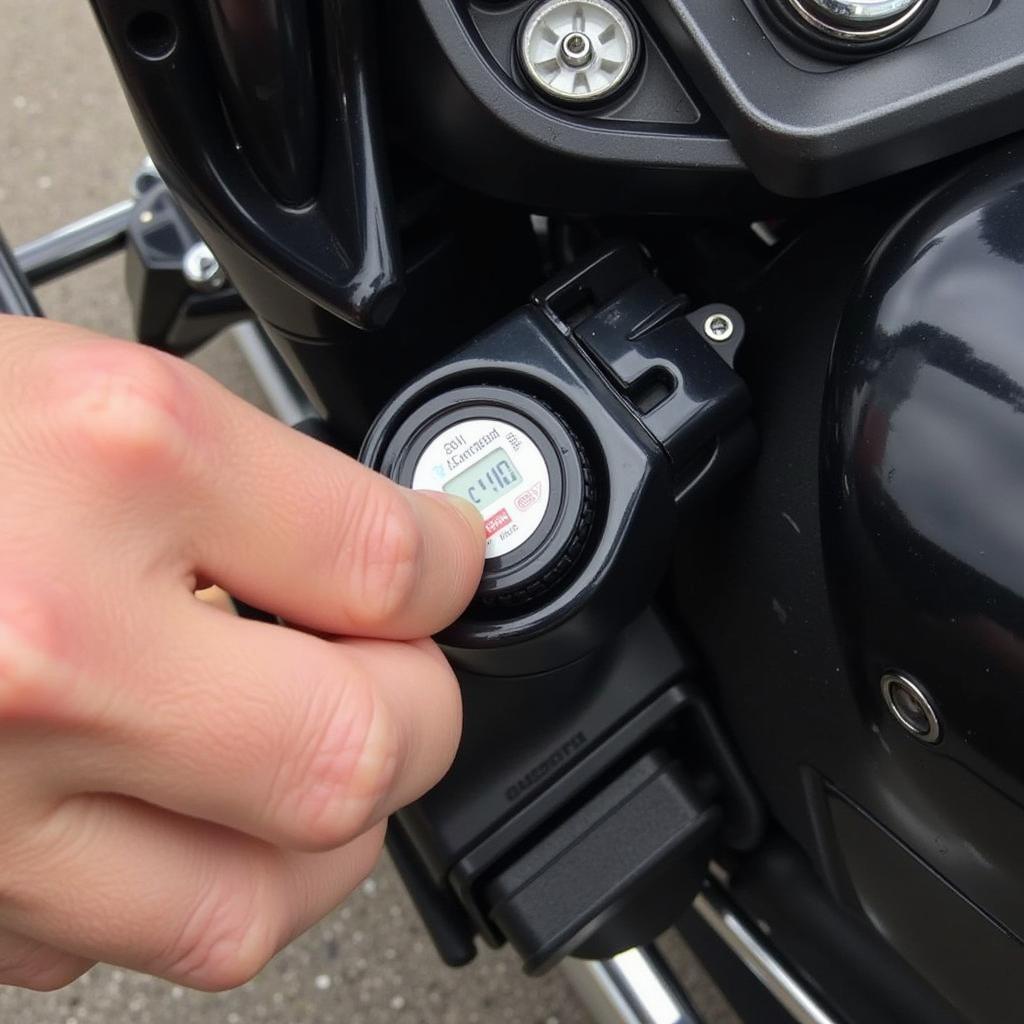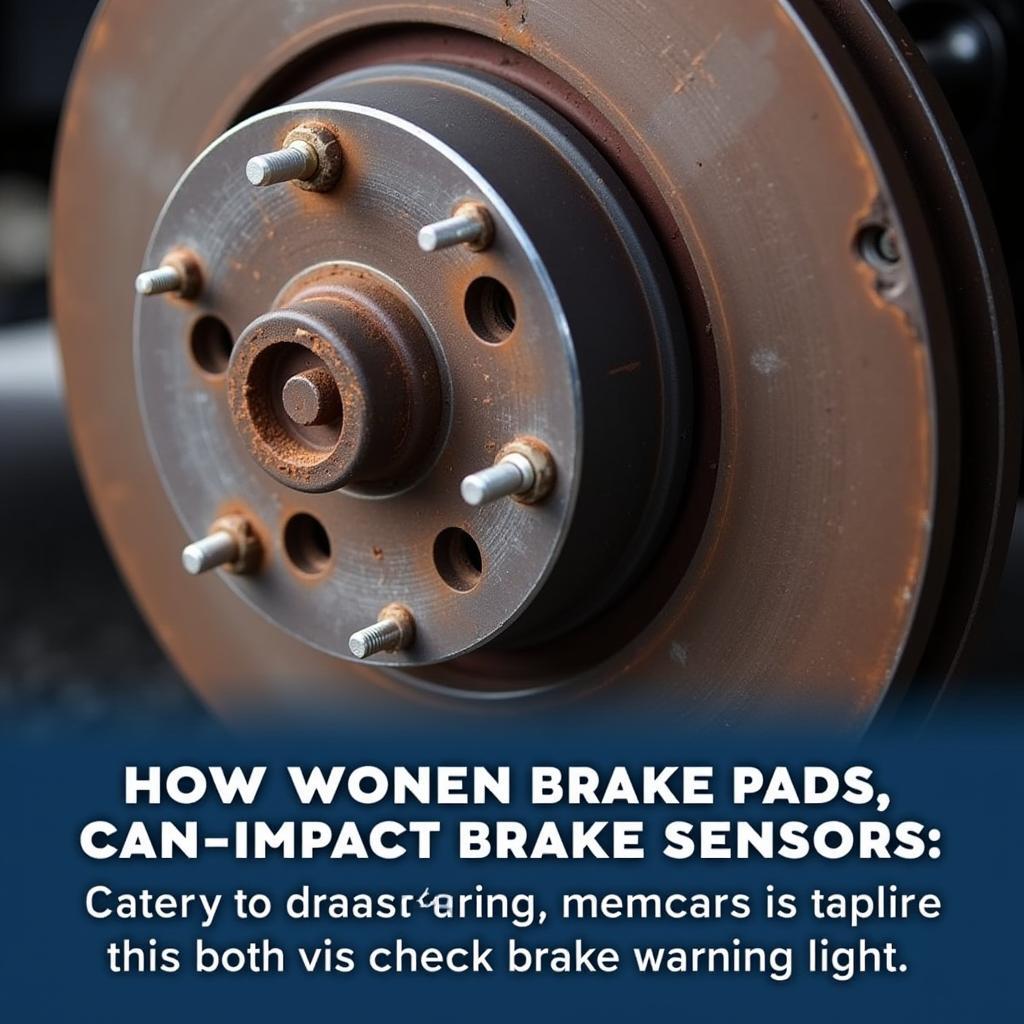If you own a Honda Goldwing GL1800 manufactured between 2010 and 2017, you might have encountered a disconcerting issue: a flashing brake light accompanied by a deceleration warning. This problem can be alarming, but understanding its potential causes and solutions can help you address it effectively. This guide will provide in-depth information about the gl1800 10-17 brake light flashing deceleration warning, covering everything from simple checks to more advanced diagnostic techniques.
Understanding the GL1800 Deceleration Warning System
The deceleration warning system on the GL1800 is designed to alert other drivers when you’re slowing down rapidly. It activates the brake light in a flashing pattern, distinct from normal braking. This system is tied to several components, including the brake pressure sensor, wheel speed sensors, and the bike’s control module. A malfunction in any of these areas can trigger the flashing brake light and deceleration warning, even if there isn’t a genuine braking issue.
Common Causes of the Flashing Brake Light and Deceleration Warning
Several factors can contribute to this problem. Let’s explore some of the most frequent culprits:
- Low Brake Fluid: Insufficient brake fluid can trigger the warning. Always check your brake fluid level first.
- Faulty Brake Pressure Sensor: This sensor monitors the pressure in the braking system. If it malfunctions, it can send incorrect signals to the control module.
- Wheel Speed Sensor Issues: The wheel speed sensors help determine the bike’s deceleration rate. A faulty sensor can lead to false warnings.
- Wiring Problems: Damaged or corroded wiring connected to the brake system can disrupt communication and cause the warning light to flash.
- Software Glitches: Occasionally, a software glitch in the bike’s control module can trigger this issue.
Troubleshooting Steps for a Flashing Brake Light
Here’s a step-by-step guide to help you troubleshoot the gl1800 10-17 brake light flashing deceleration warning:
- Check Brake Fluid: Ensure the brake fluid reservoir is full. If it’s low, top it off with the correct DOT 4 brake fluid.
- Inspect Brake Light Switch: Make sure the brake light switch is functioning properly. Sometimes a simple adjustment or replacement can resolve the issue.
- Inspect Wiring: Carefully examine the wiring connected to the brake system, looking for any signs of damage, corrosion, or loose connections.
- Check Wheel Speed Sensors: Inspect the wheel speed sensors for any damage or debris. Cleaning the sensors might solve the problem.
 Checking Brake Fluid Level on a GL1800
Checking Brake Fluid Level on a GL1800
Advanced Diagnostics and Remote Software Solutions
If the basic troubleshooting steps don’t resolve the issue, more advanced diagnostics may be necessary. This is where remote software solutions come into play. Using specialized diagnostic tools, a technician can remotely access your bike’s control module to identify the root cause of the problem. They can analyze data from the brake pressure sensor, wheel speed sensors, and other relevant components.
Sometimes, the issue might be related to a software glitch in the control module. In such cases, a remote software update or reprogramming can often rectify the problem without any physical intervention.
“Remote diagnostics and software updates are game-changers for motorcycle maintenance,” says John Miller, Senior Automotive Diagnostic Technician at Miller’s Motorcycle Repair. “They allow us to quickly and accurately diagnose complex issues, saving time and money for our customers.”
When to Seek Professional Help
While some issues can be resolved with basic troubleshooting, it’s crucial to seek professional help if:
- The problem persists after trying the basic steps.
- You’re not comfortable working with electrical components.
- You suspect a more serious issue with the braking system.
Conclusion
The gl1800 10-17 brake light flashing deceleration warning can be caused by various factors, ranging from low brake fluid to more complex issues with sensors or software. By following the troubleshooting steps and considering remote diagnostic options, you can effectively address this problem and ensure your GL1800 remains safe and reliable on the road. If you’re unsure about any step, don’t hesitate to consult a qualified motorcycle technician.
“Remember, your safety is paramount. Don’t ignore any warning lights on your motorcycle,” advises Sarah Davis, Lead Technician at Davis Motorcycle Services. “Addressing issues promptly can prevent more serious problems down the road.”
FAQ
-
What should I do if the warning light continues to flash after checking the brake fluid? If the brake fluid level is adequate, you should inspect the brake light switch and the wiring for any issues. If the problem persists, consider seeking professional help.
-
Can a low battery cause the brake light to flash? While a low battery can cause various electrical problems, it’s less likely to directly cause the flashing brake light associated with the deceleration warning system.
-
How often should I check my brake fluid level? It’s recommended to check your brake fluid level at least once a month and before any long rides.
-
Is it safe to ride my GL1800 with the flashing brake light? While you might be able to ride, it’s not recommended. The flashing light indicates a potential issue with the braking system, which could compromise your safety.
-
What are the benefits of using remote diagnostics? Remote diagnostics allows technicians to quickly identify the root cause of the problem, often without the need for physical inspection, saving time and potentially reducing repair costs.
-
How much does a remote diagnostic typically cost? The cost of remote diagnostics can vary depending on the service provider and the complexity of the issue.
-
Can I perform a remote software update myself? While some software updates might be accessible to owners, it’s generally recommended to have a qualified technician perform any software updates to avoid potential complications.

